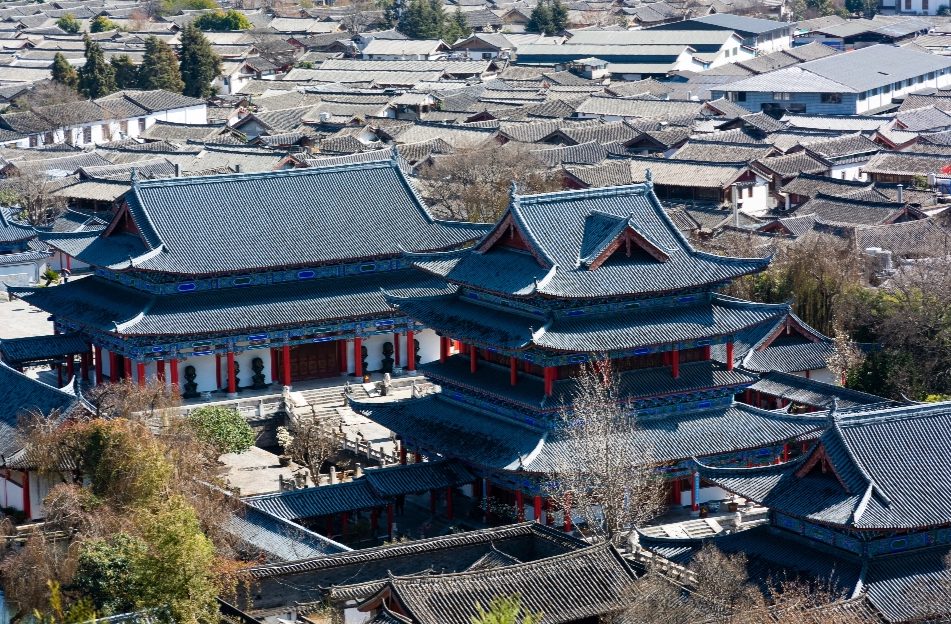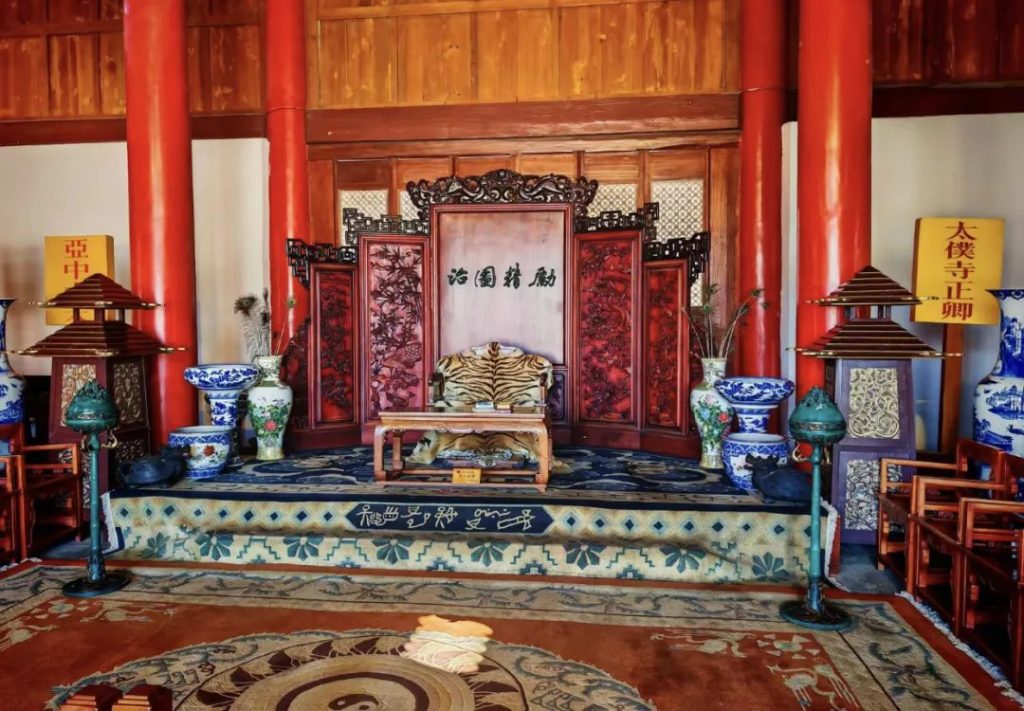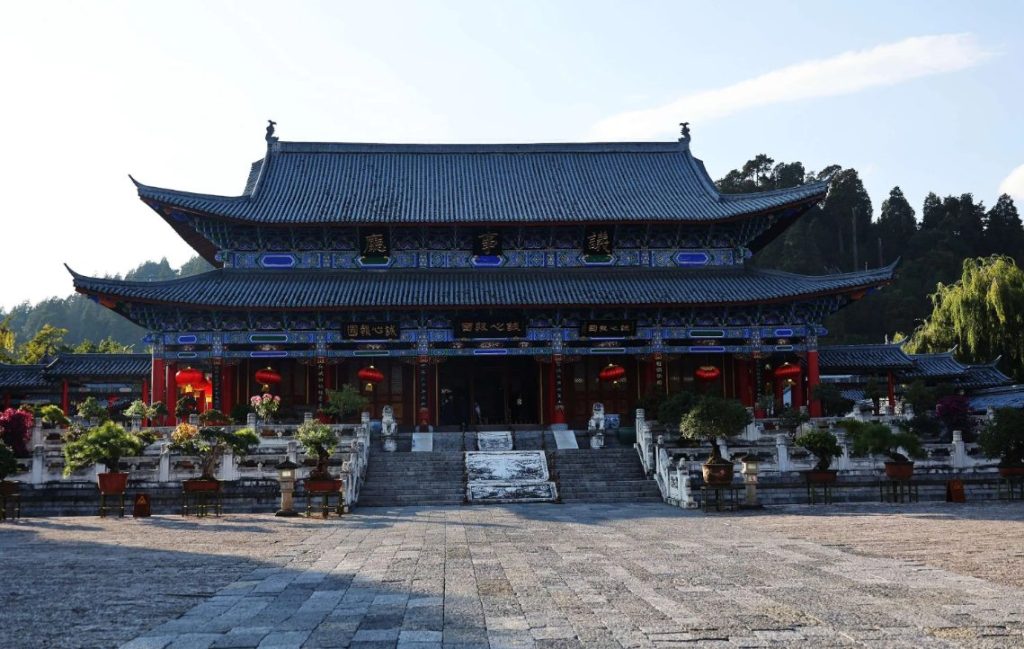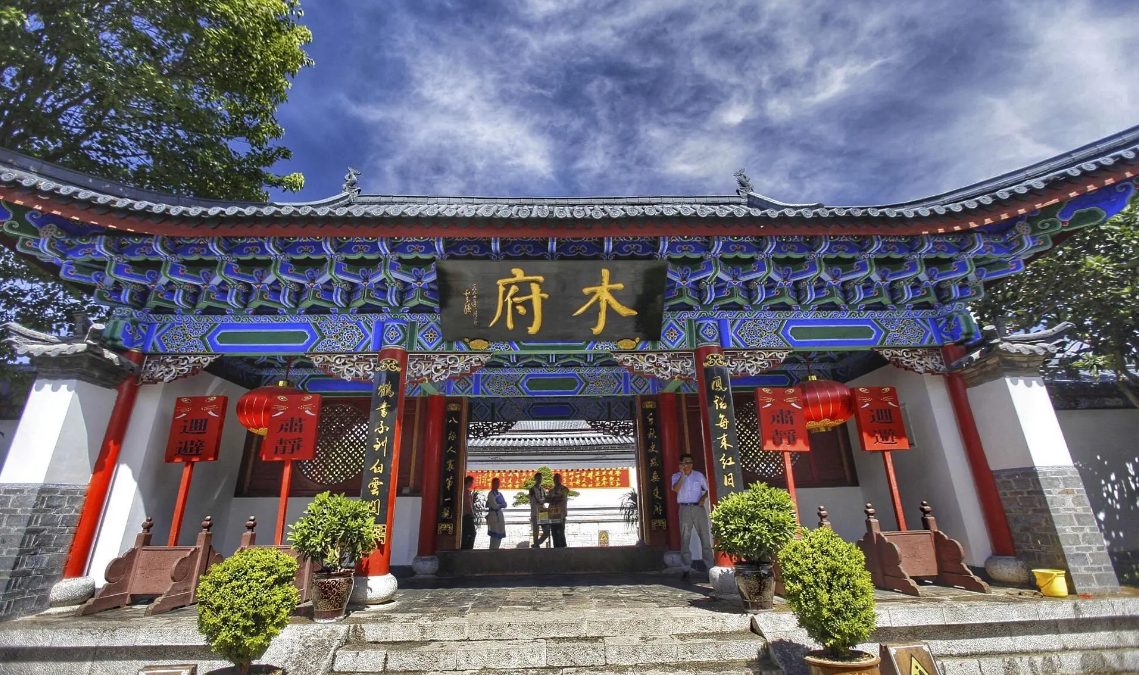At the end of Lijiang Old Town‘s green stone road stands the Lijiang Mufu, a palace marveled at by Ming Dynasty explorer Xu Xiake.
Known locally as the “Forbidden City of the Naxi”, this complex was once the center of power for the Mu Clan, which ruled Lijiang for 470 years, and has now become a living museum for interpreting the diverse cultures of Southwest China.

Table of Contents
History: From Local Chiefs to Imperial Ministers
The Rise of the Mushi
In 1382, Ajia Ade, a Naxi leader, led his troops to submit to the Ming Dynasty’s founding emperor, Zhu Yuanzhang, and was given the Chinese surname “Mu(木)” with the hereditary title of governor of Lijiang.
Thus, the Mu family began nearly five centuries of rule over northwestern Yunnan, becoming the “agent” of the central dynasty on the southwestern border, while maintaining a relatively independent political status.

The Wisdom of the Tusi System
The ruling philosophy of the Mofu is reflected in the architectural layout: unlike the Forbidden City, where the core of power is placed at the top of the central axis, the Mofu sets the commercial center of the Sifang Street as the heart of the ancient city, controlling the lifeblood of commerce and trade but avoiding excessive centralization of power.
This “retreat to the second line” of wisdom, so that the Mofu in the Ming and Qing dynasties has always played a key role in the “Southwest screen”.
Architectural decoding: witness to the fusion of civilizations
Han-style system and national characteristics
The Chinese alabaster Sumeru seat of Zhongyi Square, the heavy-eaved hipped roof of the Council Hall, and the glazed tiles of the Hall of the Three Pristine Ones highlight the architectural system of the Chinese court in the Ming Dynasty in every way. However, the unique beliefs of the Naxi people are also integrated into it:
The old city without walls: because the Naxi surname “wood (木)”, if you build walls as “sleepy (困)” word, so the old city of Lijiang to maintain an open pattern.
Three-clawed Golden Dragon: The dragon on the armrest of the Dragon Chair in the Council Chamber has only three toes (five for the royal family), implying the wisdom of survival of “the emperor is far away”.
The House of Ten Thousand Scrolls
This wooden pavilion with a collection of 100,000 volumes is the cultural heart of Mufu:
Chinese texts are juxtaposed with the Dongba scriptures.
Tibetan Buddhist thangkas coexist with Taoist statues of the Three Pristine Ones.
The Naxi poet Muzeng’s collection of poems in Chinese, “Chanting in the Snowy Mountains”, was written here.
Must Experience: Explore like a Historian

Core tour route (1.5 hours)
Zhongyi Square: the main gate of Mufu, an alabaster plaque witnessing the history of the Tusi’s submission to the Ming Dynasty.
Council Hall: Hang the plaque of “Sincerity for the Country” and observe the special design of the three-clawed golden dragon carving.
Ten Thousand Scrolls Building: Touch the pages of the Dongba script to understand the wisdom of the Naxi hieroglyphics.
Hall of Protecting Dharma: enjoy the religious fusion spectacle of Tibetan Buddhism, Taoism and Dongbaism gods coexisting together.
Jade Sound Building: Enjoy the replicas of Lijiang mural paintings and listen to Naxi ancient music.
Sanqing Hall: climb to the top for a panoramic view of the ancient city and a distant view of Jade Dragon Snow Mountain
In-depth cultural experience
Night Tour of Mufu (limited to summer): light show after 19:00, holographic projection recreating the scene of Xu Xiake’s visit
Dongba writing workshop: write your name in hieroglyphics and make an exclusive bookmark (at the entrance of the scenic spot)
Afternoon Tea on the Ancient Tea Horse Road: Brewing Pu’er tea with snow mountain spring water in the Mufu Tea Room, with traditional Naxi snacks
Practical Information
Tickets: RMB 40/person (including professional explanation), 10% off for booking on the official website
Opening hours: 8:30-17:30 (night tour until 21:00)
Transportation:
5 minutes walk from the south gate of Lijiang Old Town.
Cab: “Mufu Parking Lot”.
Taboo Tips:
Photographs are not allowed inside the Dharma Protector’s Palace
White gloves are required to touch the Dongba sutra (free of charge).
Neighborhood Exploration
Lion Mountain: the back door of the Mofu leads to the Vanguard Tower for a panoramic view of the ancient city (35RMB admission)
Sifang Street: Participate in Naxi Beat Dance (ethnic group dance) every night at 8 pm
Zhongyi Market: savor authentic snacks such as chickpea cold noodles and ghee tea (5-minute walk from Mufu)
The story of Mufu is a true portrayal of the Naxi people’s struggle for survival and development in the flood of history. There is no fictional power struggle here, but it is truly staged:
How the Tusi family balanced the relationship between the central and local
How the Chinese, Tibetan and Bai cultures collide and integrate here
How ordinary Naxi people build a unique spiritual world.
When you leave the wooden house, you may understand: the real charm of the palace, not in its architectural scale, but in its complete preservation of a nation in the multi-cultural fusion of the wisdom of survival.
As written in the couplet of Mufu: “The phoenix edict comes near the red sun every time, the crane book is not idle in the white clouds”, which explains the subtle relationship between the frontier regime and the central dynasty.
